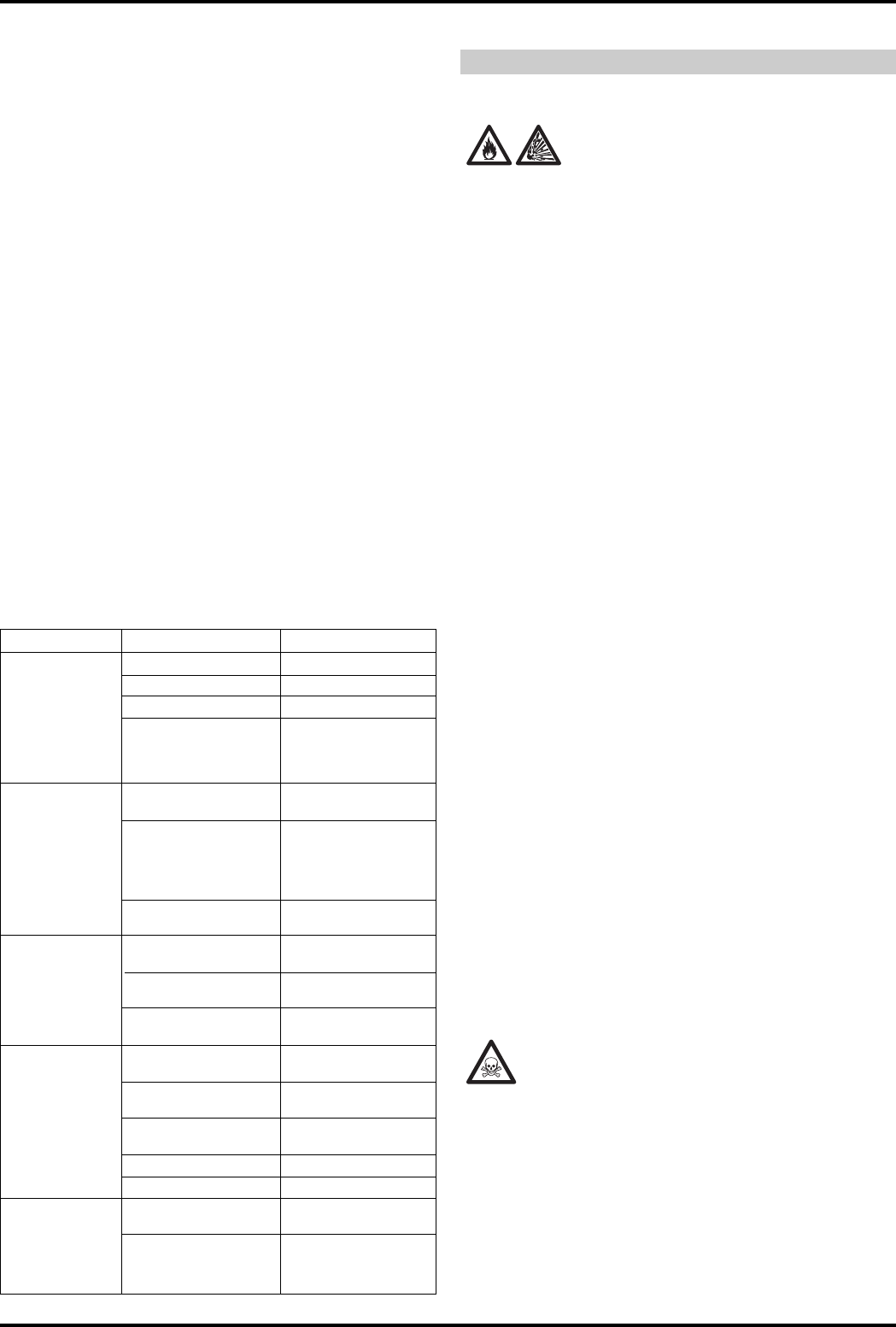
5
6.2.1 Instructions for performing repairs
l After rewinding the transformer or inductance, the weld-
ing machine must pass the applied voltage tests as indi-
cated in table 2 of paragraph 6.1.3 of the standard EN
60974.1 (CEI 26.13). Compliance must be verified as
specified in 6.1.3.
l If no rewinding has been done, a welding machine that
has been cleaned and/or revised must pass an applied
voltage test with test voltage values equal to 50% of the
values given in table 2 of paragraph 6.1.3. Compliance
must be verified as specified in 6.1.3.
l After rewinding and/or replacing parts, the no-load volt-
age must not exceed the values given in paragraph 10.1
of EN 60974.1.
l If the repairs have not been performed by the manufac-
turer, repaired welding machines in which some compo-
nents have been replaced or altered must be marked in
such a way that the person who performed the repairs is
clearly identifiable.
l After making repairs, take care to re-order the wiring so
that there is certain insulation between the primary side
and the secondary side of the machine. Prevent the wires
from coming into contact with moving parts or parts that
heat up during operation. Replace all clamps as on the
original machine to prevent a connection from occurring
between the primary and secondary side if a conductor
accidentally breaks or disconnects.
6.3 TROUBLESHOOTING GUIDE
7 SAFETY PRECAUTIONS
7.1 FIRE
l Avoid causing fire because of sparks,
slag, hot metal or pieces.
l Make sure that suitable fire-fighting equip-
ment is available close to welding area.
l Remove all flammable and combustible material from
the welding area and its surrounding (32 ft minimum).
l Do not weld containers of combustible or flammable
material, even when empty. These must be carefully
cleaned before being welded.
l Allow the welded material to cool down before touching it or
putting it in contact with combustible or flammable material.
l Do not weld parts with hollow spaces, containing flam-
mables.
l Do not work under conditions with high concentrations of
combustible vapours, gases, or flammable dust.
l Always check the work area half an hour after welding
so as to make sure that no fire has started.
l Do not keep any combustible material such as lighters or
matches in your pockets.
7.2 BURNS
l Wear fire-proof clothing all over your body in order to pro-
tect your skin against burns caused by ultraviolet radiation
given off by the arc, and from weld metal sparks and slag.
l Wear protective clothing-gauntlet gloves designed for
use in welding, hat and high safety-toe shoes. Button shirt
collar and pocket flaps, and wear cuff-less trousers to
avoid entry of sparks and slag.
l Wear helmet with safety goggles and glasses with side
shields underneath, appropriate filter lenses or plates (pro-
tected by clear cover glass). This is a MUST for welding to
protect the eyes from radiant energy and flying metal.
Replace cover glass when broken, pitted, or spattered.
l Avoid oil or greasy clothing. A spark may ignite them.
Hot metal such as electrode stubs and workpieces should
never be handled without gloves.
l First-aid facilities and a qualified first-aid person should
be available for each shift unless medical facilities are
close by for immediate treatment of flash burns of the eyes
and skin burns.
l Ear plugs should be worn when working on overhead or
in a confined space. A hard hat should be worn when oth-
ers work overhead.
l Flammable hair preparations should not be used by per-
sons intending to weld or cut.
7.3 FUMES
Welding operations give off harmful fumes and
metal dusts which may be hazardous to your
health, therefore:
l Work in a well-ventilated area.
l Keep your head out of fumes.
l In closed areas, use suitable exhaust fans.
l If ventilation is not enough, use breathing sets approved
for this procedure.
l Clean the material to be welded of any solvents or halo-
gen degreasers giving rise to toxic gases. Some clorine
solvents may decompose with the radiation emitted by the
arc, and create phosgene gas.
l Do not weld plated metals or those containing lead,
ROUBLE
The welding machi-
ne supplies limited
current
Welding with a lot
of metal spatter
The wire jams or
entangles between
the drive rolls and
the torch infeed wire
guide
No wire feed or irre-
gular wire feed
Porosity in the wel-
ding seam
PROBABLE CAUSE
Line fuse blown
Burnt out diode or diodes
Burnt out electronic board
Loosened torch or earth
connections or any other
electrical power connec-
tions
Voltage adjustment switch
has a loose contact
Improper adjustment of
welding parameters
Insufficient grounding
Contact tip with wrong dia-
meter
Misalignment of the drive
roll groove
Obstructed or clogged
liner
Drive roll with too large a
groove
Obstructed or clogged
liner
Wire holding roller not
completely tightened
Clogged contact tip
Insufficient shielding gas
Excess oxidation of the
edges to be welded
Gas nozzle partially or
completely clogged by
spatter
REMEDY
Replace line fuse
Replace
Replace
Tighten all connections
Replace the switch
Select the correct parame-
ters through the welding-
voltage switch and the
wire-speed adjustment
potentiometer
Check grounding connec-
tions
Replace
Realign
Remove and clean
Replace the drive roll
Remove and clean
Tighten all the way
Replace
Increase gas delivery
Thoroughly clean the
edges with a metal brush
Remove and clean or
replace being careful not
to clog the gas outlets


















